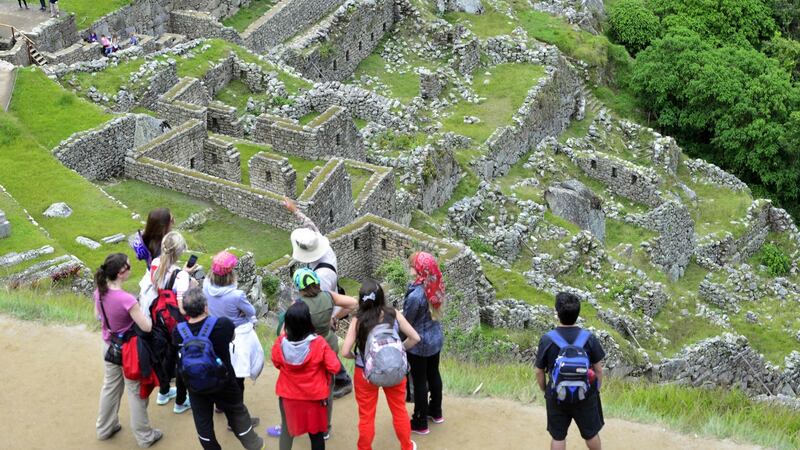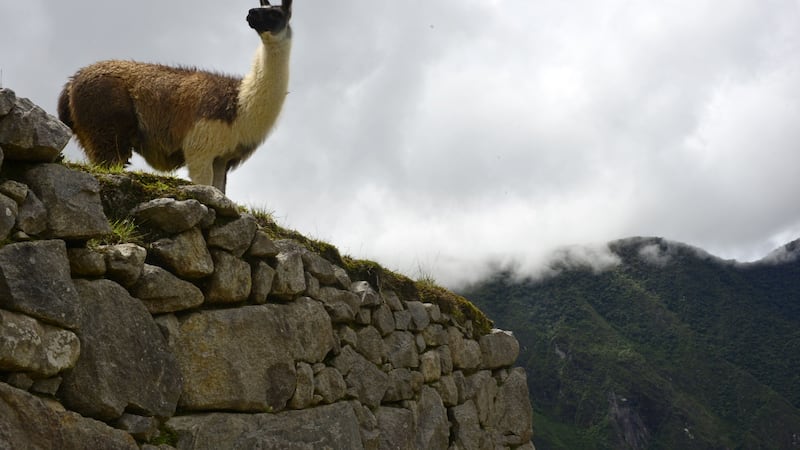Among the Inca ruins that abound in Peru, none draw nearly as many tourists as the famed Inca citadel of Machu Picchu. There were more than 1.5 million visitors in 2017, double the limit recommended by Unesco, putting a huge strain on the fragile ruins and local ecology.
Now, in a move that has drawn a mixture of horror and outrage from archaeologists, historians and locals, work has begun on clearing ground for a multibillion-dollar international airport, intended to jet tourists into Machu Picchu directly.
Bulldozers are already scraping clear millions of tonnes of earth in Chinchero, a picturesque Inca town about 3,800 metres above sea level that is the gateway to the Sacred Valley. This area was once was the heartland of a civilisation that stretched from modern-day Colombia to Argentina, and in the 15th century was the world’s largest empire.

"This is a built landscape; there are terraces and routes which were designed by the Incas," says Natalia Majluf, a Peruvian art historian at Cambridge University who has organised a petition against the new airport. "Putting an airport here would destroy it."
At present most visitors to the valley come through Cusco airport, which has only one runway and is limited to taking narrow-bodied aircraft on stopover flights from Peru's capital, Lima, and nearby cities such as La Paz, Bolivia.
But the new airport, which construction companies from South Korea and Canada are queueing up to bid on, would allow direct flights from major cities across Latin America and the US.
Critics say planes would pass low over nearby Ollantaytambo and its 348 sq km archeological park, causing potentially incalculable damages to the Inca ruins. Others worry that construction would deplete the watershed of Lake Piuray, which Chinchero relies on for its water.

“It seems ironic and in a way contradictory that here, just 20 minutes from the Sacred Valley, the nucleus of the Inca culture, they want to build an airport – right on top of exactly what the tourists have come here to see,” said the Cusco-based anthropologist Pablo Del Valle.
The petition asks the Peruvian president, Martín Vizcarra, to reconsider or relocate the airport from Chinchero. “I don’t think there’s any significant archeologist or historian working in the Cusco area that hasn’t signed the petition,” says Majluf.
Chinchero was built six centuries ago as a royal estate for the Inca ruler Túpac Inca Yupanqui, and is incredibly well-preserved. The local economy is based on farming and tourism, but even those who rely on visitors are wary of the plans.
Karen Auccapuma, 20, weaving a blanket on a handheld loom by a bleached-white colonial church in the town square, says: “Think of the noise, the air pollution, the illnesses it will bring.”
Nearby, watching as a busload of tourists walk through the plaza, Alejandrina Contreras adds: “We live peacefully here, there are no thieves, there are no criminals. There will be progress with the airport but a lot of things will change.”
An initial plan by a private firm became bogged down in allegations of price-hikes and local corruption, but with the arbitration process now settled, the government is vowing to push ahead to complete it by 2023.
“This airport will be built as soon as possible because it’s very necessary for the city of Cusco,” Peru’s finance minister, Carlos Oliva, told journalists last month. “There’s a series of technical studies which support this airport’s construction.”
The mayor, Luis Cusicuna, says local leaders have been pushing for a second larger airport in Cusco since the 1970s. Many locals believe promises of 2,500 construction jobs, and others have profited from selling up: Yanacona, one of Chinchero’s three indigenous communities, sold virtually all its land to the state for about $35m, while some peasant families made a small fortune in relative terms by selling hectares of farmland previously used for growing potatoes.
There is a “legitimate concern that Cusco’s travel infrastructure is at its limit,” says Mark Rice, the author of Making Machu Picchu: The Politics of Tourism in Twentieth-Century Peru. But the location of the new airport will do a “lot of damage to one of the key tourism offerings of Cusco, which is its scenic beauty”.
The problem is that Machu Picchu is “so singularly dominant for the Peruvian tourism offering”, he says. “The best way I can describe it is if people going to Britain only went to Stonehenge.”
In an effort to manage growing visitor numbers, Peru has tightened entry requirements to the site, limiting visits to morning and afternoon shifts after Unesco threatened to place Machu Picchu on a list of world heritage sites in danger.
At the same time, however, the airport project is seeing new houses and hotels being thrown up hurriedly in Chinchero in the expectation of a tourism windfall. - Guardian









